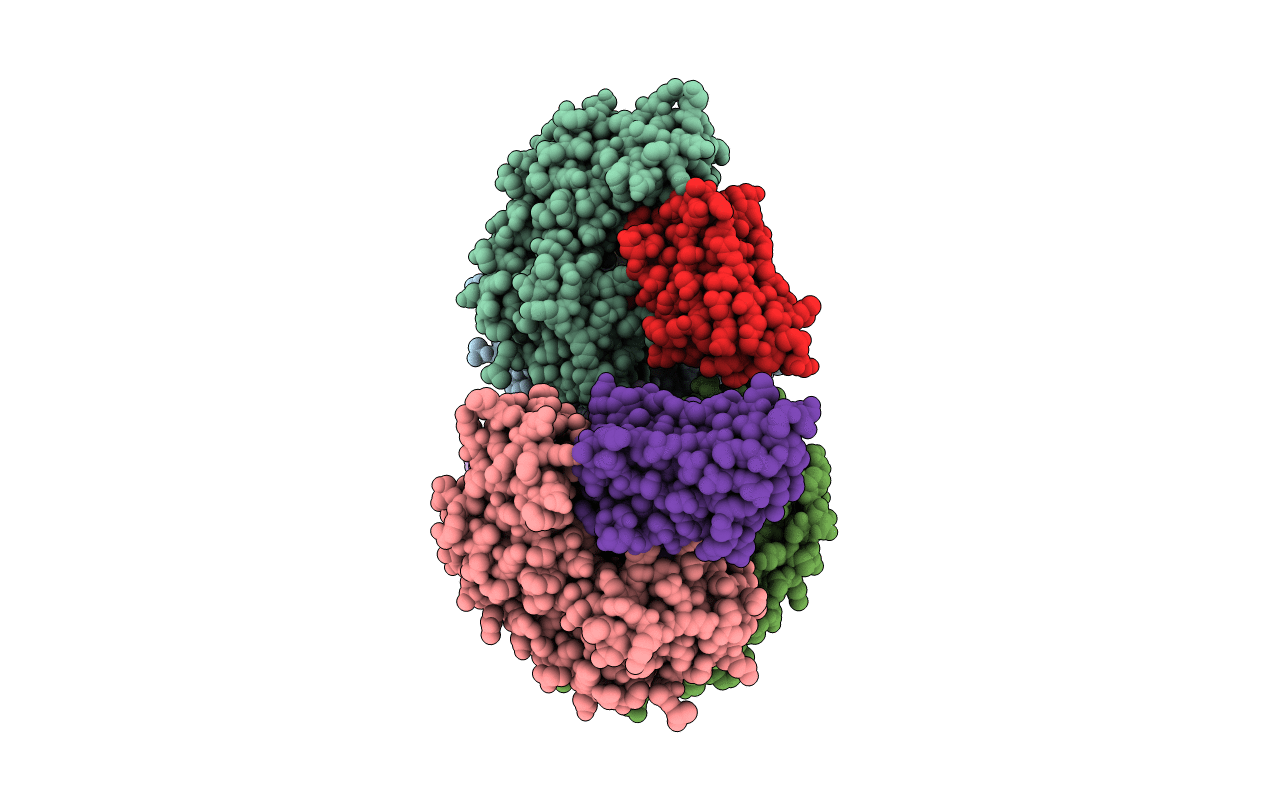
Deposition Date
2017-08-30
Release Date
2017-11-08
Last Version Date
2024-10-09
Entry Detail
PDB ID:
5OVW
Keywords:
Title:
Nanobody-bound BtuF, the vitamin B12 binding protein in Escherichia coli
Biological Source:
Source Organism:
Escherichia coli (Taxon ID: 562)
Lama glama (Taxon ID: 9844)
Lama glama (Taxon ID: 9844)
Host Organism:
Method Details:
Experimental Method:
Resolution:
2.65 Å
R-Value Free:
0.25
R-Value Work:
0.22
R-Value Observed:
0.22
Space Group:
P 21 21 21


